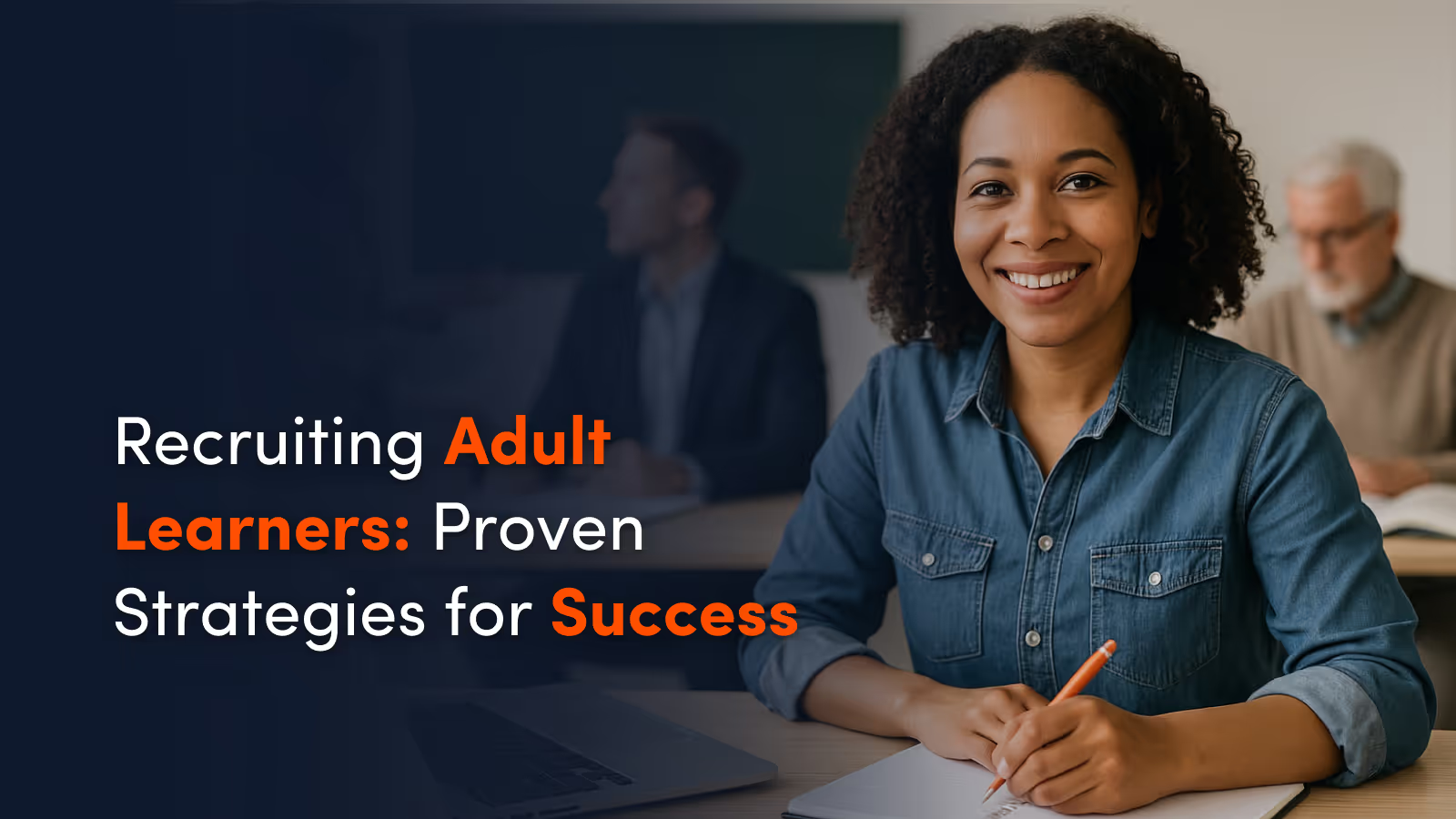About the Blog
Key Takeaways
- Adult learners represent a growing and critical audience for colleges and universities.
- Tailored messaging, digital outreach, community partnerships, and flexible learning options are essential for effective recruitment.
- Support services like advising and career counseling greatly impact adult learner success.
- Monitoring recruitment efforts with clear metrics ensures strategies stay effective and responsive.
Introduction
As traditional student demographics shift, recruiting adult learners has never been more important for higher education institutions. With career changers, upskillers, and degree completers reshaping enrollment trends, schools must rethink their strategies to meet this population’s distinct needs. Adult learners bring valuable experience and motivation, but they also face unique challenges that require targeted approaches to engagement and support.
What Are Adult Learners?
Adult learners typically refer to students aged 25 and older, although many definitions expand to include anyone pursuing education after a significant break. Their backgrounds are incredibly diverse: some are working professionals seeking advancement, others are parents balancing school and family, and some are retirees pursuing personal growth.
Yet, they often face shared barriers:
- Time constraints, balancing education with work and family
- Financial concerns about the cost of returning to school
- Technological apprehension navigating modern learning platforms
Understanding these obstacles is the first step in crafting effective recruitment strategies.
Strategies for Recruiting Adult Learners
Adult learners are motivated, goal-oriented, and pragmatic—but reaching them requires thoughtful, student-centered approaches.
Crafting Tailored Messaging
Personalized communication is crucial. Messages that resonate with adult learners acknowledge their life experience, professional goals, and logistical needs. Effective messaging often highlights:
- Flexibility: “Learn on your schedule with evening and online options.”
- Career advancement: “Gain the credentials to unlock your next opportunity.”
- Support services: “We’re here to help—every step of the way.”
Using testimonials and success stories from past adult learners can also build trust and make the path to enrollment feel more relatable.
Leveraging Digital Platforms for Outreach
Digital marketing is key to reaching adult learners where they are.
- Use social media platforms like Facebook and LinkedIn to target working professionals.
- Ensure your website and landing pages are mobile-friendly and easy to navigate.
- Optimize for search engines by focusing on keywords relevant to adult learners' interests and needs, like career change programs or flexible degrees.
These strategies also connect closely with evolving trends in technology in education, where user-friendly design is a top priority.
Building Community Partnerships
Partnering with local businesses, libraries, workforce development centers, and community organizations can open new referral channels. Some successful examples include:
- Employer-education alliances offering tuition reimbursement for employees.
- Community center collaborations hosting info sessions or career fairs.
- Nonprofit partnerships offering scholarships for adult students.
These relationships not only boost enrollment but also position institutions as community-driven.
Offering Flexible Learning Options
Flexibility isn’t a luxury—it’s a necessity for adult learners. Programs that offer:
- Evening and weekend classes
- Online or hybrid learning models
- Self-paced degree tracks
Providing Robust Support Services
Academic advising, career counseling, technical support, and mentorship programs can dramatically improve adult learner outcomes. Institutions that invest in comprehensive support structures often see:
- Higher retention rates
- Greater student satisfaction
- Stronger word-of-mouth referrals
For example, universities that integrate peer support groups for adult learners often report increased engagement and graduation rates, helping them stay competitive as the landscape shifts.
How to Monitor Your Recruitment Efforts
Tracking key performance indicators (KPIs) ensures your strategies are actually working. Focus on:
- Application and enrollment conversion rates
- Email open and click-through rates
- Inquiry-to-enrollment pipeline metrics
Tools like Google Analytics, CRM dashboards, and SEO performance reports allow institutions to adjust quickly and refine strategies over time, especially critical when recruiting a diverse and digitally savvy adult audience.
Conclusion
Recruiting adult learners demands a thoughtful, flexible, and data-driven approach. By crafting tailored messaging, leveraging digital outreach, building strong community ties, offering flexible learning options, and providing robust support services, institutions can meet adult learners where they are—and help them reach where they want to go.
In a time of significantly higher ed policy shifts, adopting a learner-centered approach isn’t just smart—it’s necessary for future success.
Frequently Asked Questions
What are the most effective channels for reaching adult learners?
Social media advertising, email marketing, and partnerships with local employers are among the most effective outreach methods.
How can institutions address the financial concerns of prospective adult students?
By offering flexible payment plans, promoting available scholarships and grants, and collaborating with employers on tuition reimbursement programs.










